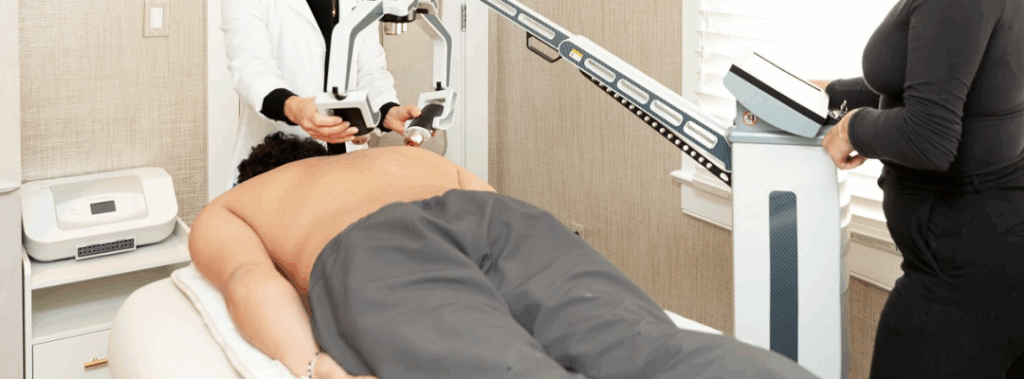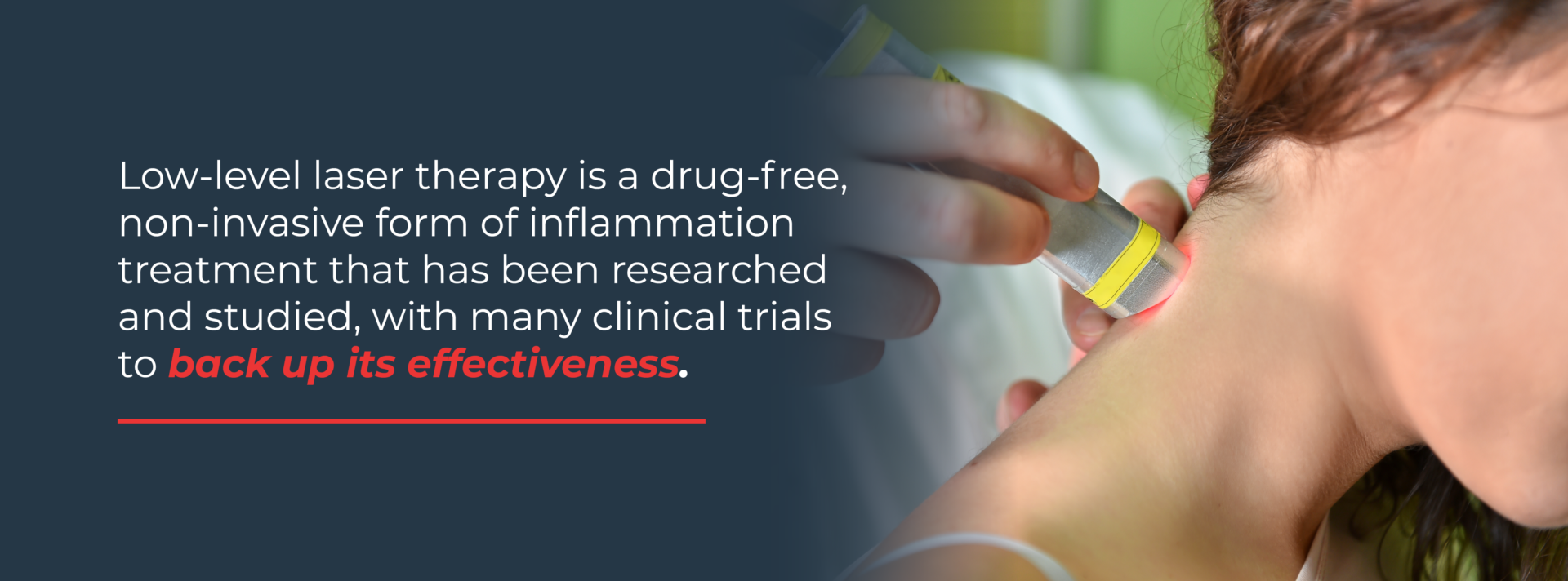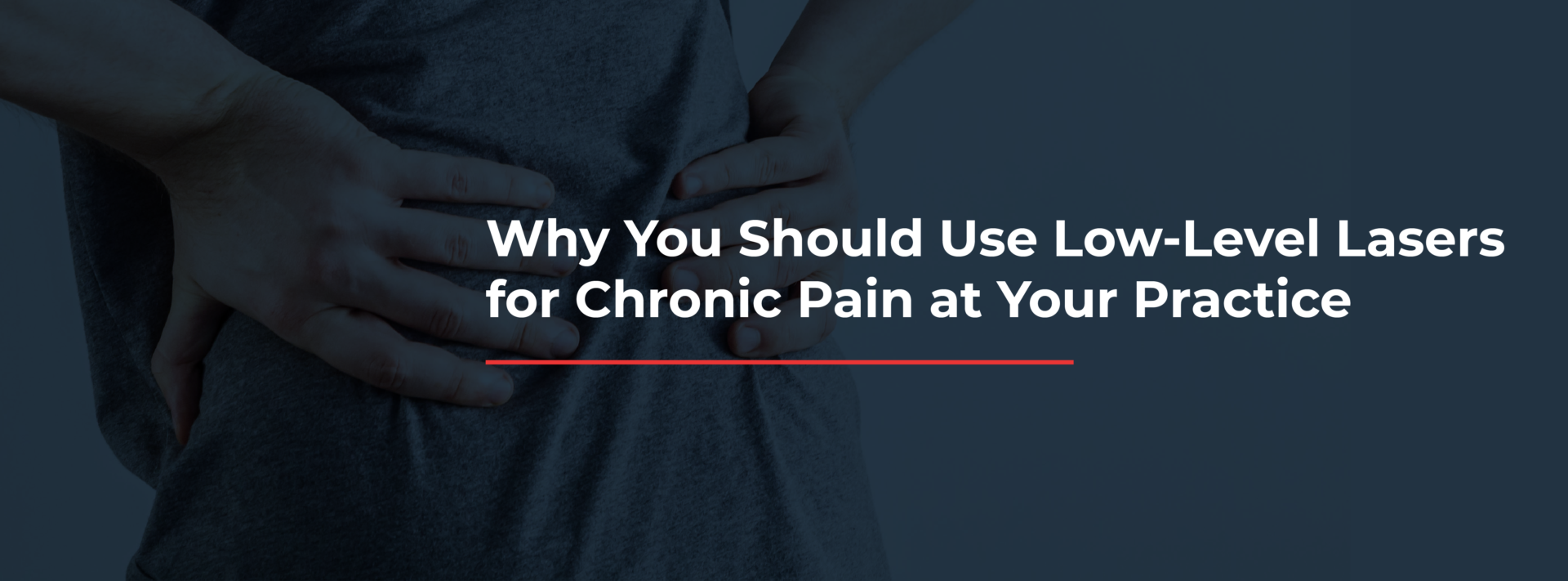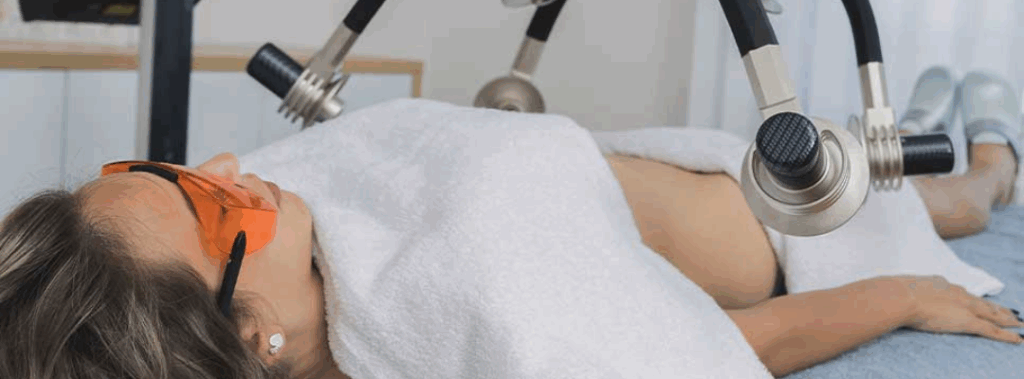
Low-level light laser therapy is a non-invasive treatment that has been used in the medical field for decades to aid in the rebuilding of the body at a cellular level. It has rapidly grown in popularity as a form of treatment for a wide variety of common ailments.
It’s a drug-free, non-invasive form of inflammation treatment that has been researched and studied, with many clinical trials to back its effectiveness. Studies show success in patients with chronic lower back pain as well as those with chronic neck pain, and those recovering from injury or surgery.
In this guide we will walk you through everything you need to know about setting up a low-level laser therapy program with success in your medical office.
The Benefits of Low-Level Laser Therapy for Your Practice
It is a low-risk, cost-effective treatment that can help relieve pain and shorten recovery time for various needs. In addition to the pain relief mentioned above, this technology can support recovery from conditions like plantar fasciitis and onychomycosis. The low-light laser technology can be integrated into various healthcare fields including physiotherapy and podiatry.

It’s not hard to see why this is such an attractive option for many physicians. Here’s a few benefits that low-light laser therapy brings to your medical establishment:
- The non-pharmaceutical treatment can attract more patients to your office who do not want drugs as their primary solution.
- There are rental options and financing opportunities that can ease the burden of outright purchasing this laser technology equipment. In some cases, this allows more liquidity and increased cash on-hand.
- Using low-level laser therapy at your practice helps you serve the growing number of people in the United States with back pain. According to the CDC, 39% of Americans experienced back pain in 2019. Equipping your practice with a variety of treatment options for chronic back pain, including low-level laser therapy can help you treat a larger demand and increase patient flow.
- It can help you treat different medical conditions, including fat loss in obese patients (up to 40 BMI), toenail fungus, plantar fasciitis, and lower back pain. It allows you to provide effective treatment for your patients. For example, your clients won’t need to worry about side effects and long downtimes as with some traditional surgeries or procedures. The cold laser therapy device uses lower frequencies and wavelengths, ensuring tissue protection.
- Low-light laser therapy promotes a shorter recovery period for your patients. It is non-invasive, and your customers can overcome health concerns like chronic pain without excessive, added pain. Today, many people understand the importance of non-invasive treatment. It could explain why many shy away from traditional surgeries.
Tips to Achieve the Benefits of Low-Light Laser Therapy
Now that we’ve delved into some of the benefits, here’s some tips on how to make them happen at your practice. Here’s where to start:
Review Your Patient Demographics
One of the best ways to satisfy your patients is by understanding their demographics. Diving into where they are from and what geographical issues impact their lives will allow you to get a better understanding of what they want to achieve with the treatment.
You’ll likely deal with older adults, personal injury patients, and athletes. Understanding everyone’s unique needs ensures you deliver customized services.
Don’t Ignore Marketing Your Service
Regardless of the service you provide, marketing is essential. This is especially true for professionals offering low-light laser therapy. For example, your patients will want to know how this treatment can help them recover.
How do you reach out to potential clients? How will you help them to understand that low-light laser therapy is effective? This is where marketing your service comes into play.
Incorporate a broad range of marketing strategies, including social media posts and direct mailing. Here are tips to get you started:
- Press releases
- Radio & print ads
- Videos to explain your service
- Office brochures and posters
These marketing strategies will help you explain the low-light laser therapy to potential patients to evaluate whether they need it. For example, you can describe the protocols, process, and what they can achieve with the treatment. Keep everything simple to leverage the power of marketing.
Educate Your Staff About Low-Light Laser Therapy
If you’re looking to integrate new technology into your medical practice, education can give you the confidence you need. You can leverage the available online materials, including research, tips, videos, and webinars to equip your employees with knowledge and skills.
You also need to know what to expect when dealing with different patients. How will you handle temperamental patients? When marketing your service, don’t over promise your potential patients. Explain what they need to expect after treatment and deliver high-quality services as promised.
Low-light laser therapy might be foreign to many individuals, but it has proven to be effective. Practitioners can leverage this to succeed in their service delivery.
Get the Best Out of Your Laser Therapy Equipment
The first step to getting your low-light laser therapy program up and running is to research the right equipment for your practice. Here are some essentials to look for when shopping for low-level laser therapy machines.
The Intensity of the Laser Beam
The intensity of the laser beam is an essential consideration when deciding which device is suitable for your practice. Low-intensity beams are used more often than high-intensity beams because they have a softer range of frequencies and can be tolerated by more people.
For example, suppose an individual has sensitive skin. In that case, they may not tolerate higher levels of intensity from a low-level laser beam. Still, they could tolerate it from a more moderate or low-intensity beam depending on their specific skin sensitivity level and duration exposure time needed per day.
The Type of Laser Therapy Device
When considering a laser therapy device for your practice, you’ll need to decide what type of light is best for your patients. The type of treatment you choose depends on the condition being treated and the experience level of the clinician.
A few different types of treatments include low-level lasers, high-power lasers, and infrared light. If you’re starting with a low-light laser therapy program in your practice, it’s best to start with a low-level laser or infrared light device.
The Wavelength
Wavelengths are also important when selecting a device. They determine which type of tissue will be stimulated by the treatment process and how deep into those tissues it will reach to reduce inflammation and pain.
Low-light laser therapy is a cost-effective way to offer your patients safe and effective treatment. With the proper guidance and enough research, you can have a successful low-laser light therapy program.
Learn about Erchonia’s new FDA market cleared FX 635. the only laser on the market proven through clinical trials to treat chronic low back pain.



